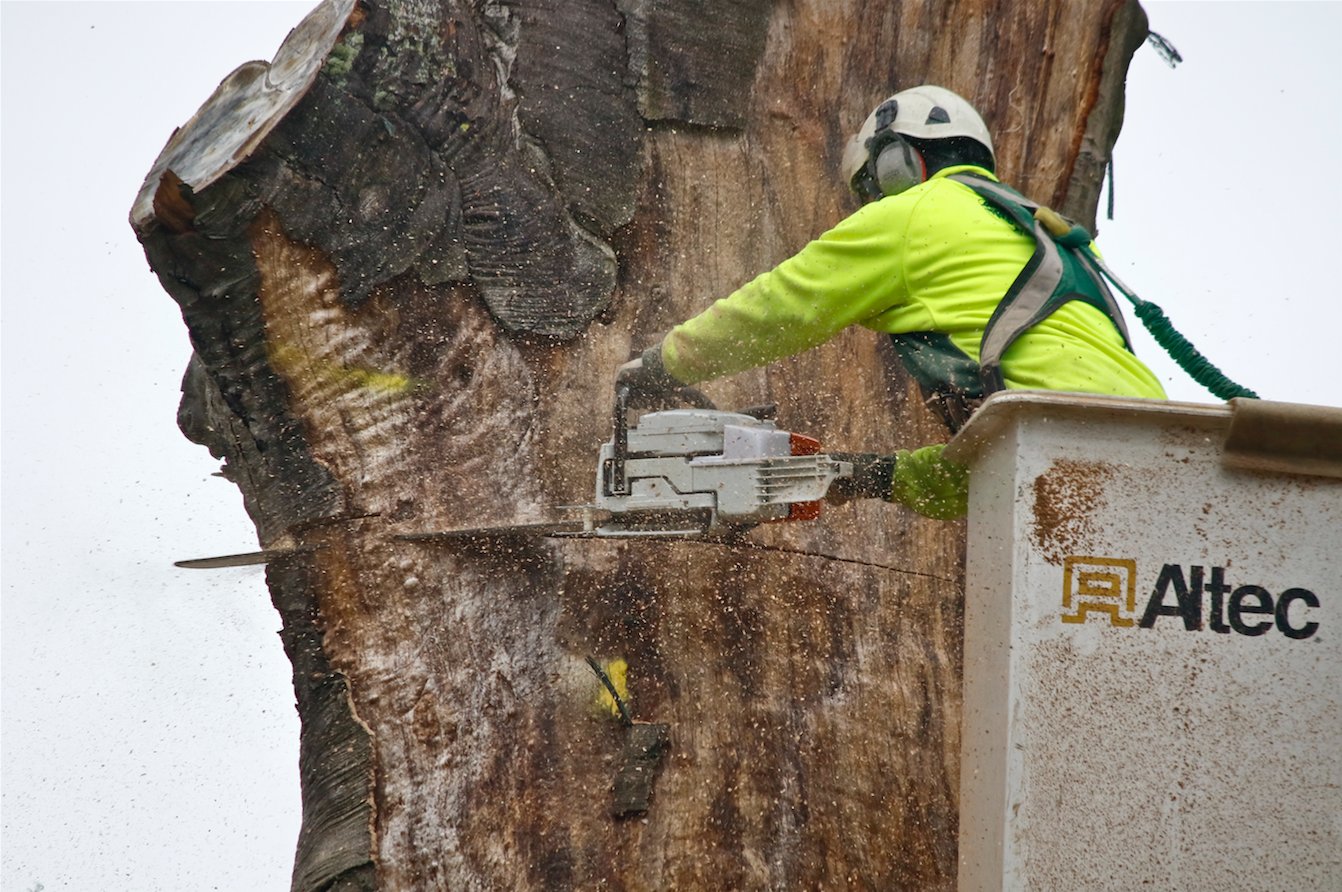Taking down Teddy Roosevelt's tree
Copper beech is removed at Sagamore Hill
In an arboreal footnote to history on a cold, misty Monday morning at Sagamore Hill National Historic Site, workers removed the trunk of a 125-year-old copper beech tree that had been planted by President Theodore Roosevelt at the entrance to his Cove Neck home. Its branches had been felled in late June, in compliance with a decision by the National Park Service to cut the tree down because it was dead, having succumbed to a fungus that could not be contained.
Roosevelt’s library, at the front of the house, faces south, which enabled him to watch people as they came up the driveway, Sagamore Hill’s curator, Susan Sarna, explained. A visitor could imagine the president standing resolutely at the library window, watching the tree removal, perhaps with his children gathered around him — or, maybe more likely, charging outside to direct the workers from Bartlett Tree Experts and Urban Specialty Woods.
Wealthy North Shore denizens were known to plant copper beeches in Roosevelt’s day. When he decided to plant one of his own in 1895, he chose a purple beech, which belongs to the copper tree family. The tree was stunning, its leaves a deep purple.
It was donated to the Theodore Roosevelt Association 10 years ago by the park service. The association made sure the tree was pruned and the soil surrounding it aerated. But seven years ago, it appeared to be dying. Bartlett, a tree service headquartered in Westbury, began an effort, free of charge, to save the tree, which included fertilizing the dirt that surrounded it and adding mulch. But no matter what the tree company did, the purple beech continued to decline.
“Four years ago, the leaves were starting not to come back,” said the acting superintendent of Sagamore Hill National Park, Paul Cecere. “During the last two seasons it was losing its bark, and this year no leaves at all appeared.”
The tree was popular among tourists, Sarna said, and she fielded many questions. “People began asking about the tree the minute it started dying,” she recalled, “wanting to know what we were doing with the poor tree.”
Copper piping, secured by brackets, was added on the side of the tree 10 years ago to protect it and the house from lightning. But over the years the tree grew around, and over, the copper, which may affect some of the plans the association has for the tree’s remains. Its members would like to see benches made from it placed on the grounds of Sagamore Hill, as well as smaller items that would be for sale, like replicas of the large rocking chairs on the porch of the house museum. But Cecere said that the extent of the damage to the tree from the copper inside it — as well as the fungus — needs to be determined before any decision can be made about what will be crafted.
The plan is to cut the trunk into 3-inch-thick slabs 15 feet long, said Harry Slutter, the owner of Urban Specialty Woods, an arborist who grew up in Oyster Bay. “I think it’s a tree of significance, and instead of seeing it get thrown away, I’d rather see it come back and get a new life. For me, it’s very cool too see it get repurposed.”
The park service thought ahead, removing part of the tree and replanting it at the Planting Fields Arboretum in Oyster Bay.
“We have 24 trees ready to go which come from seeds and grafts from the original tree,” Sarna said. “We wanted to be sure that we’d have purple beech trees.”
The Roosevelts lived at Sagamore Hill from 1885 to 1919, but the house museum is furnished, or “interpreted,” as it was from 1902 to 1908, during Roosevelt’s presidency.
When a new tree is planted where the old one was, it will be the same size, Cecere said — 10 to 20 feet tall — as when Roosevelt was president. This is exciting, Cecere said, because the interpretation of the museum will be even more accurate.
“Theodore Roosevelt did like his purple beech tree,” Sarna said. “It wasn’t good for climbing, but the children probable did try to when they were younger.”
Keeping children visiting Sagamore Hill from doing the same may be the next challenge for the park service.






